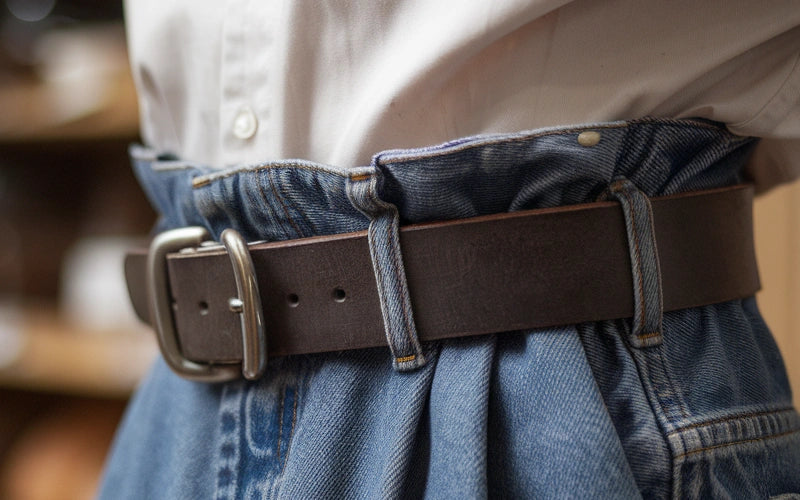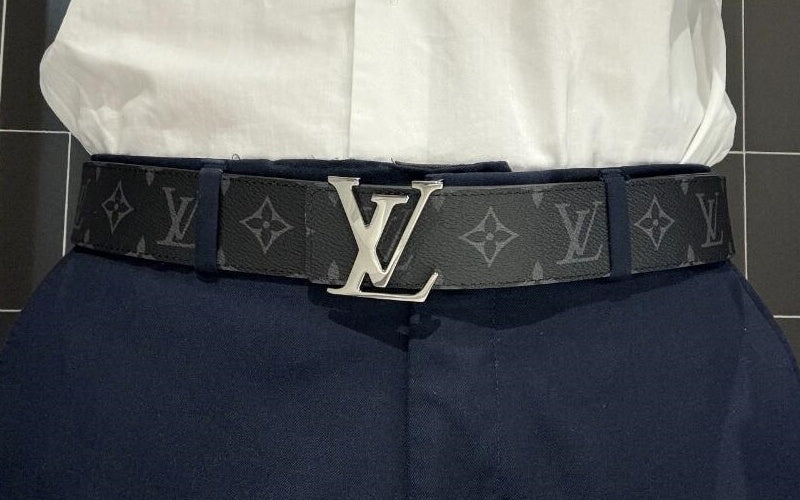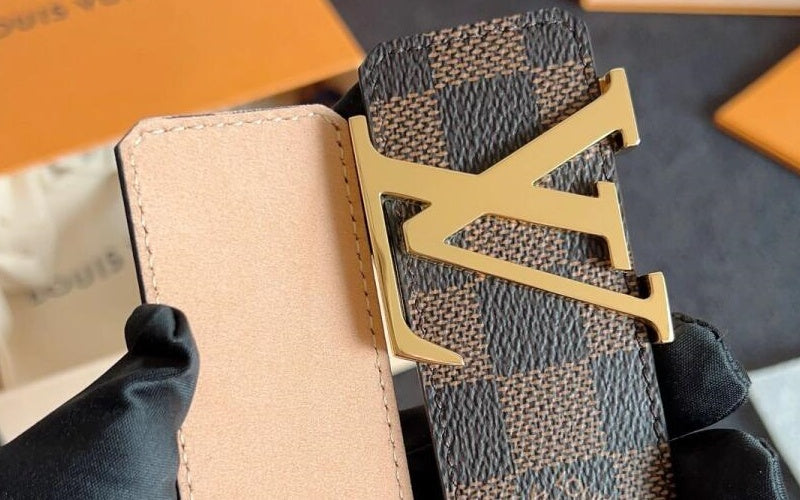
10 Little-Known Side Effects of Wearing a Tight Belt
You’ve probably heard the saying, “Beauty is pain,” but when it comes to wearing a tight belt, the consequences go far beyond a little discomfort.
At Beltley, we’re all about blending luxury with wellness—because looking sharp shouldn’t mean sacrificing your health.
In this no-holds-barred guide, we’re diving deep into the hidden risks of cinching your waist too tight, backed by science, real-life stories, and actionable fixes. Let’s get into it—no fluff, just facts.
 Interested with this comfortable belt? Please Click the picture above to see more
Interested with this comfortable belt? Please Click the picture above to see more
1. Digestive Discomfort: The Silent Saboteur of Your Gut Health
Picture this: You’re at a business lunch, rocking your favorite slim-fit suit and a sleek leather belt. But halfway through your meal, a burning sensation creeps up your chest. Sound familiar? Tight belts compress your stomach and intestines, forcing acid upward and slowing digestion. Here’s the breakdown:
-
Acid reflux: Like squeezing a tube of toothpaste, pressure on your stomach pushes acid into the esophagus.
-
Bloating and constipation: Your intestines need space to contract and move food. A tight belt stifles this process, leading to that dreaded “food baby” look.
-
Long-term risks: Chronic acid exposure can erode your esophagus lining, raising the risk of Barrett’s esophagus (a precancerous condition).
Real Talk: A buddy of mine, let’s call him Dave, ignored his reflux for years, blaming spicy foods. Turns out, his habit of wearing his belt two notches too tight was the real culprit. After switching to a flexible Beltley design, his symptoms vanished.
Pro Tip: After meals, loosen your belt slightly. Your gut will thank you.
 Interested with this comfortable belt? Please Click the picture above to see more
Interested with this comfortable belt? Please Click the picture above to see more
2. Restricted Breathing: Why You’re Feeling Foggy by 3 PM
Your diaphragm—the muscle responsible for breathing—expands downward when you inhale. But a tight belt cages this motion, forcing shallow chest breathing. The result?
-
Lower oxygen intake: Reduced oxygen flow to the brain = midday fatigue and brain fog.
-
Aggravated anxiety: Shallow breathing triggers the body’s stress response.
-
Exercise limitations: Try running or lifting weights with a constricted core. Spoiler: It’s brutal.
Science Says: A 2020 study in the Journal of Ergonomics found office workers who wore tight belts reported 22% more afternoon fatigue than those who didn’t.
Beltley’s Fix: Our belts use buttery-soft, full-grain leather that molds to your body—no suffocation required.
 Interested with this comfortable belt? Please Click the picture above to see more
Interested with this comfortable belt? Please Click the picture above to see more
3. Nerve Compression: The Mystery Thigh Numbness No One Talks About
Ever stood up after a long meeting and felt like your thighs were asleep? Meet meralgia paresthetica—a fancy term for nerve compression caused by tight clothing. Symptoms include:
-
Tingling or burning in the outer thighs.
-
Numbness that lingers for hours.
-
Rare cases: Permanent nerve damage if ignored.
True Story: Sarah, a nurse, wore a rigid belt during 12-hour shifts. After months of thigh numbness, her physiotherapist traced it back to her belt. Switching to an elasticated Beltley design saved her career.
Takeaway: If your belt leaves marks, it’s too tight. Period.
 Interested with this comfortable belt? Please Click the picture above to see more
Interested with this comfortable belt? Please Click the picture above to see more
4. Skin Nightmares: Rashes, Fungus, and Pressure Sores
Leather belts might look chic, but cheap materials can wreak havoc:
-
Dermatitis: Synthetic linings or dyes trigger allergic reactions (think: red, scaly patches).
-
Fungal infections: Sweat trapped under a tight belt is prime real estate for yeast and bacteria.
-
Pressure sores: Desk jockeys, beware—constant friction can break down skin over time.
Beltley’s Secret Weapon: Our belts are lined with vegetable-tanned leather, which breathes like human skin and resists microbial growth.
 Interested with this comfortable belt? Please Click the picture above to see more
Interested with this comfortable belt? Please Click the picture above to see more
5. Posture Problems: The Hunchback Effect
A tight belt pulls your pelvis forward, forcing your spine into a C-shape. Over time, this leads to:
-
Rounded shoulders and forward head posture (aka “text neck”).
-
Chronic lower back pain: Misaligned spines strain muscles and ligaments.
-
Disc degeneration: Compressed spinal discs lose cushioning, raising the risk of herniations.
Quick Fix: Pair your belt with daily cat-cow stretches to counteract slouching.
 Interested with this comfortable belt? Please Click the picture above to see more
Interested with this comfortable belt? Please Click the picture above to see more
6. Muscle Atrophy: Why Your Abs Are Getting Lazy
Wearing a tight belt is like using a crutch for your core. Your abdominal muscles stop engaging, leading to:
-
Weakness and poor balance.
-
A protruding belly (ironic, right?).
-
Higher injury risk during physical activity.
Beltley’s Advice: Use belts for style, not support. Strengthen your core with dead bugs or bird-dog exercises.
7. Circulatory Issues: Cold Feet Aren’t Just for Winter
Tight belts pinch blood vessels, disrupting circulation. Consequences include:
-
Swollen ankles and feet: Fluid pools in your lower extremities.
-
Varicose veins: Weak valves struggle against restricted blood flow.
-
Deep vein thrombosis (DVT): Long flights + tight belts = dangerous clots.
Travel Hack: On flights, swap your belt for suspenders or a stretchy alternative.
 Interested with this comfortable belt? Please Click the picture above to see more
Interested with this comfortable belt? Please Click the picture above to see more
8. Reproductive Health: A Hot Topic for Men
For men, tight belts increase scrotal temperature by up to 3°C—enough to lower sperm count and motility. A 2025 study in Fertility and Sterility found men who wore tight belts daily had 18% lower sperm quality than those who didn’t.
Beltley’s Rule of Thumb: If you can’t comfortably slide your hand into your waistband, loosen up.
9. Psychological Stress: When Fashion Fuels Anxiety
Ever felt self-conscious about a muffin top? Tight belts amplify body image struggles, leading to:
-
Social anxiety during meals (“Will my belt pop?”).
-
Disordered eating habits to maintain a smaller waist.
-
Chronic stress from constant discomfort.
Mindful Style Tip: Choose clothing that fits your body—not the other way around.
10. Accelerated Aging of Your Spine
Years of belt-induced pressure wear down spinal discs, increasing the risk of:
-
Osteoarthritis: Cartilage breakdown in the spine.
-
Sciatica: Pinched nerves causing leg pain.
-
Chronic pain that limits mobility in later life.
Scary Stat: A 2022 study linked tight belt use in young adults to a 40% higher risk of spinal issues by age 50.
At-Risk Groups: Who Needs to Be Extra Careful?
-
Office Warriors: Sitting + tight belts = double trouble for posture and circulation.
-
Pregnant Women: Restricting the abdomen can harm fetal positioning.
-
Gym Enthusiasts: Compressed cores reduce workout efficiency and increase injury risk.
How to Pick a Belt That Doesn’t Hate Your Body
-
Size Smart: Your belt should fit the largest part of your torso (usually over clothing).
-
Material Matters: Avoid plastic-like “genuine leather.” Opt for supple full-grain or vegetable-tanned leather.
-
Test Drive: Walk, sit, and bend in the belt before buying. If it digs in, size up.
FAQs: Busting Myths & Answering Your Burning Questions
Q: Can I wear a tight belt occasionally without harm?
A: Short-term use is fine, but daily wear amplifies risks.
Q: Are there belts designed to avoid these issues?
A: Yes! Beltley’s “FlexFit” collection uses accordion-style leather that stretches with your body.
Q: Do waist trainers have the same risks?
A: Worse—they’re tighter and worn longer. Stick to belts for occasional shaping.
Q: How do I know if my belt is too tight?
A: Red marks, tingling, or trouble breathing are red flags.
The Beltley Difference: Where Luxury Meets Anatomy
We don’t just make belts—we engineer them for human bodies. Our designs feature:
-
Micro-Adjustable Buckles: Precision fit without choking your waist.
-
Breathable Linings: Moisture-wicking materials to prevent sweat buildup.
-
Ethical Craftsmanship: No toxic dyes or synthetic junk.
Final Word: Ditch the Discomfort, Keep the Style
Your belt shouldn’t be a medieval torture device.
At Beltley, we’re rewriting the rules of fashion by putting your health front and center.
Ready to upgrade your accessory game? Explore our collection at www.beltley.com—where every piece is a love letter to your well-being.

